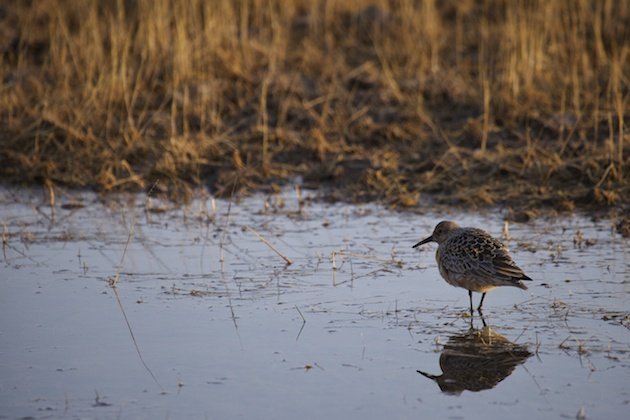
The Scots have left many legacies in the Arctic, from bannock to square dancing to accordians and jigging to a healthy contribution to the region’s DNA thanks to Whalers and Hudson’s Bay Co. men. As it turns out we can add their birds to that list.
Conventional thinking for my region of the Arctic, the north end of Baffin Island is that the Red Knots that nest here come from the North (and South) American race of Calidris canutus, the rufa race. When I photographed a pair a couple of years ago that were sporting radio tags, I assumed (and it may be the case) that they were two birds of twenty tagged that year in Virginia. Radio tags only stay with the bird until molt at which time they’re dropped with the feathers they’re attached to, thus they had to have been tagged that year.
But another race of Red Knot make the High Arctic their home, the species that winters in the United Kingdom and coast of France, ssp islandica. Conventionally this race is thought to breed in Greenland and the High Arctic Archipelago, which lies still further north of me. And while their migration isn’t near as long as rufa it is no less interesting.
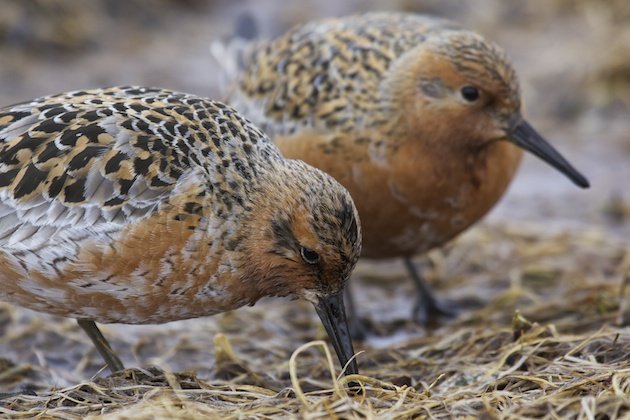
A pair of Red Knots in the High Arctic
At the beginning of June the first shorebirds that arrived at my favourite birding spot included a small group of Red Knot. We had taken a drive out there and when we arrived a friend of mine was photographing them. By the time we turned around he had finished up, and I moved in to take his place. The knot were most co-operative, feeding unconcerned right up close, in fact a couple of times they moved in to me too close to focus. I snapped away, but didn’t notice something special about one of the knots. Later that day, my friend who was reviewing his photos noticed that one of the birds sported a band (or ring in the European parlance). He was able to get a partial number, but not a complete one, and a review of my photos showed that I pretty much caught the birds standing in water with the band not visible.
White-rumped and Baird’s Sandpipers take to the air.
Red Knots huddled in a spring snow.
I returned the next day and found that the birds were still there. Typical we don’t see much of the Red Knots here, they move quickly into upland nesting areas. But we’ve had a late spring (and it is still very much late) with snow still at slightly higher elevation and I surmised that the birds were delayed in getting to those nesting grounds. I was amazed that I still found the birds (granted there was very little open water then) and quickly located the banded bird.
I photographed the band from as many angles as I could, and when I got home managed to piece together the number, XS41059. Something else stood out, the word “London”. This bird had a British Museum ring, these birds were islandica! As it turns out, XS41059 was banded in the Scottish Highlands in 2011. I’m still awaiting more details (male or female, age etc.) but I was startled at the ring’s provenance. There are just so many surprises here, given the dearth of data and the huge area.
Ringed Red Knot, XS41059
Detail of the Ring (Band), note the “Brit. Museum, London.
The Red Knots stayed around for a week, gradually dwindling until just a pair of birds remained, XS41059 and (I assume) its mate. They too disappeared one day, although I’d dearly love to know where they set up home. The rest of their story, and their breeding success, would be fascinating to know.
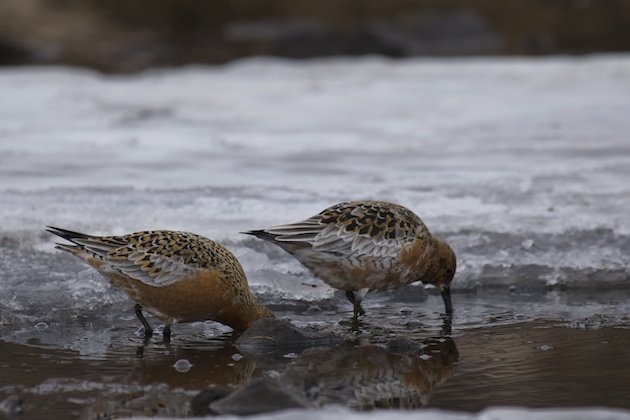
Not a view most are accustomed to seeing Red Knots, against ice.
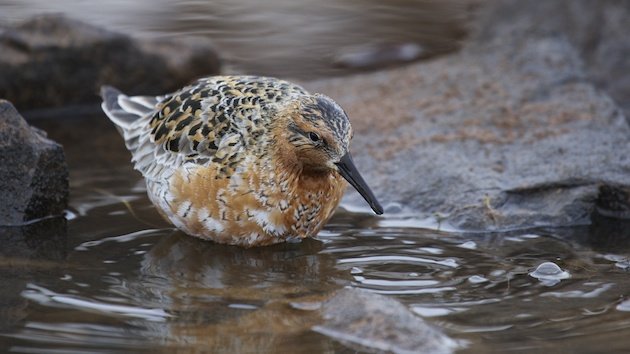
Slicked back, water drains from the head of a feeding knot.


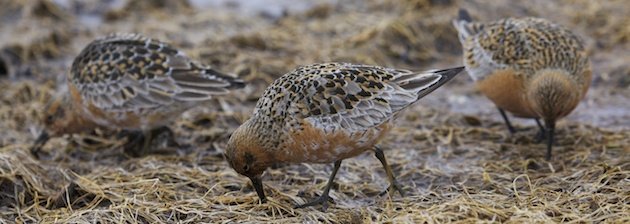
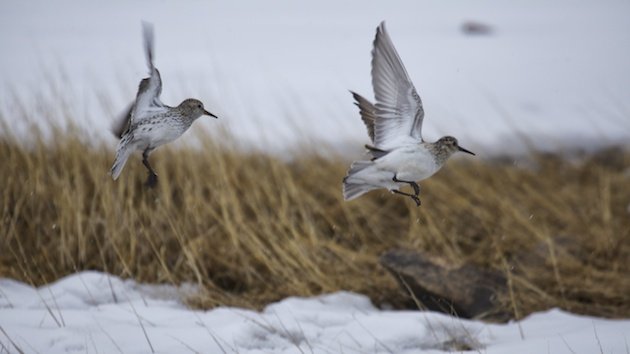
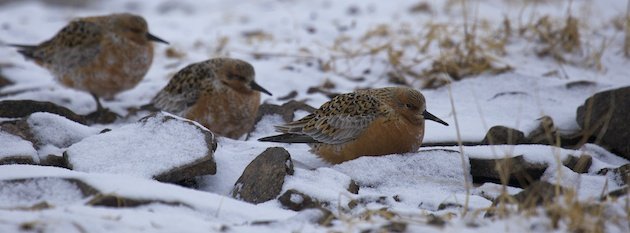
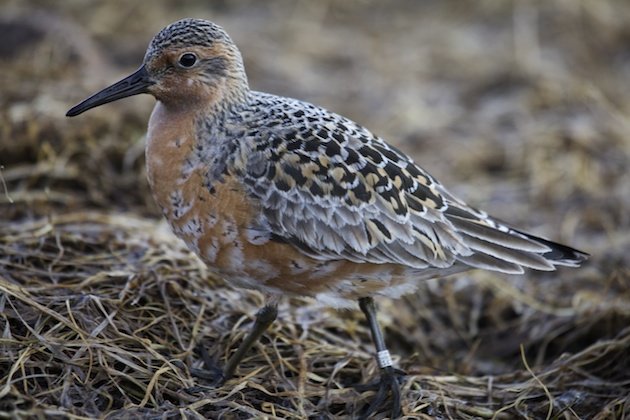
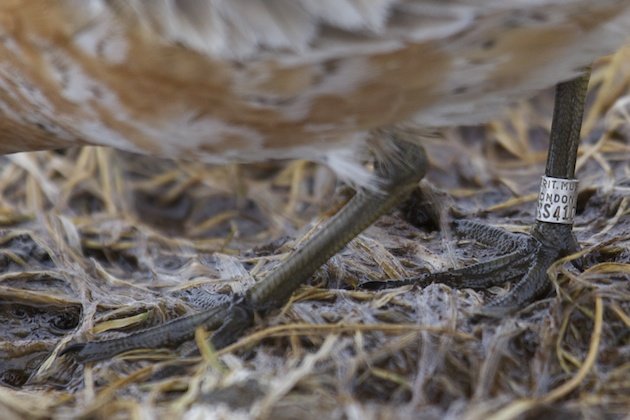





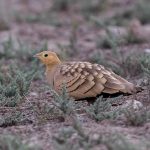





These are beautiful photos, and that bird was a really cool find! I hope you’ll post an update if you get more information on the bird.
Very interesting! Well done for getting the band number as well and that will keep the scientists thinking!
That’s one heck of a good title, Clare!
Thank you John. The birds were such a cool find, very tolerant of my presence and they’d even approach, while feeding, to within my minimum focal distance. They only ever flushed once, and that was when a Raven flew over. I will update once I’ve learned more.
Such cool birds Clare. I can’t believe how tiny Baird’s and White-rumped S look now.
Why thank you Jochen. It was one of several I considered. I quickly rejected “Sporting a tiny silver kilt”